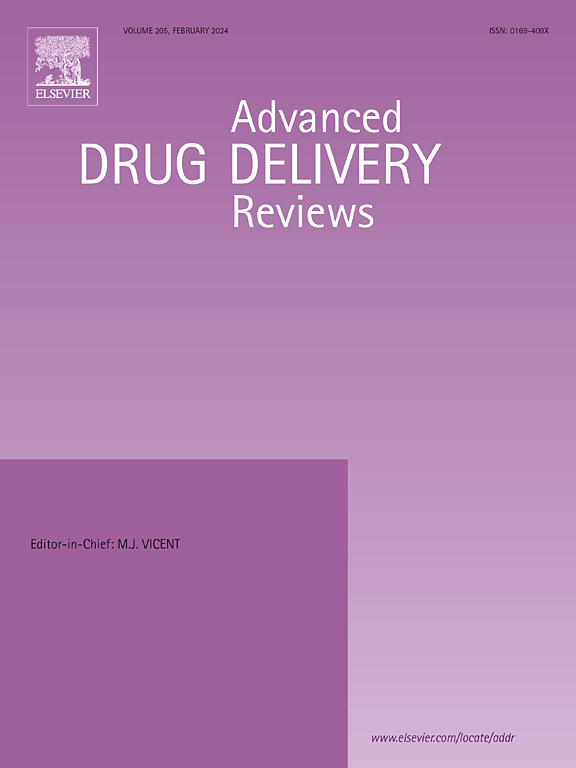Nanoparticles targeting the central circadian clock: Potential applications for neurological disorders
IF 17.6
1区 医学
Q1 PHARMACOLOGY & PHARMACY
引用次数: 0
Abstract
Circadian rhythms and their involvement with various human diseases, including neurological disorders, have become an intense area of research for the development of new pharmacological treatments. The location of the circadian clock machinery in the central nervous system makes it challenging to reach molecular targets at therapeutic concentrations. In addition, a timely administration of the therapeutic agents is necessary to efficiently modulate the circadian clock. Thus, the use of nanoparticles in circadian clock dysfunctions may accelerate their clinical translation by addressing these two key challenges: enhancing brain penetration and/or enabling their formulation in chronodelivery systems. This review describes the implications of the circadian clock in neurological pathologies, reviews potential molecular targets and their modulators and suggests how the use of nanoparticle-based formulations could improve their clinical success. Finally, the potential integration of nanoparticles into chronopharmaceutical drug delivery systems will be described.


靶向中枢生物钟的纳米颗粒:神经系统疾病的潜在应用
昼夜节律及其与包括神经系统疾病在内的各种人类疾病的关系,已成为开发新药理学治疗的一个热门研究领域。生物钟机制在中枢神经系统中的位置使得达到治疗浓度的分子靶点具有挑战性。此外,治疗剂的及时施用对于有效调节生物钟是必要的。因此,通过解决以下两个关键挑战,在生物钟功能障碍中使用纳米颗粒可能会加速其临床转化:增强大脑渗透和/或使其能够在时间传递系统中形成。这篇综述描述了生物钟在神经病理学中的意义,综述了潜在的分子靶点及其调节剂,并建议如何使用基于纳米粒子的制剂来提高其临床成功率。最后,将描述纳米颗粒与定时药物输送系统的潜在整合。
本文章由计算机程序翻译,如有差异,请以英文原文为准。
求助全文
约1分钟内获得全文
求助全文
来源期刊
CiteScore
28.10
自引率
5.00%
发文量
294
审稿时长
15.1 weeks
期刊介绍:
The aim of the Journal is to provide a forum for the critical analysis of advanced drug and gene delivery systems and their applications in human and veterinary medicine. The Journal has a broad scope, covering the key issues for effective drug and gene delivery, from administration to site-specific delivery.
In general, the Journal publishes review articles in a Theme Issue format. Each Theme Issue provides a comprehensive and critical examination of current and emerging research on the design and development of advanced drug and gene delivery systems and their application to experimental and clinical therapeutics. The goal is to illustrate the pivotal role of a multidisciplinary approach to modern drug delivery, encompassing the application of sound biological and physicochemical principles to the engineering of drug delivery systems to meet the therapeutic need at hand. Importantly the Editorial Team of ADDR asks that the authors effectively window the extensive volume of literature, pick the important contributions and explain their importance, produce a forward looking identification of the challenges facing the field and produce a Conclusions section with expert recommendations to address the issues.

 求助内容:
求助内容: 应助结果提醒方式:
应助结果提醒方式:


